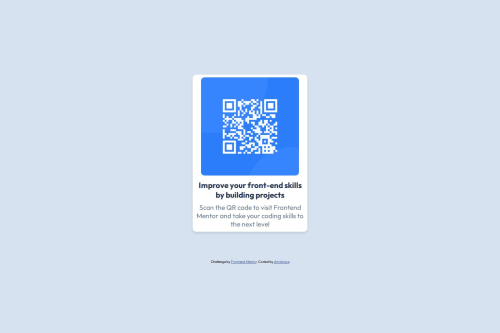
Solution retrospective
centering the div and the predicting the most precise pixel for the sizes
What challenges did you encounter, and how did you overcome them?took me a while to center the div using margins i had to go back to my learning materials to remember
What specific areas of your project would you like help with?styling
Please log in to post a comment
Log in with GitHubCommunity feedback
- @skyv26
Hi @Lufredade,
👍 Great job on your project! Here are a couple of suggestions to help improve it:
- Image path issue: It seems like the image isn't showing because you missed adding the period (
.) before the image path. Since GitHub Pages uses absolute paths, make sure your image path looks like this:
<img src="./image-qr-code.png" alt="QR code">This should solve the problem and display the image correctly. 📸
- Card width styling: Your card has a fixed width, which works, but you can simplify your CSS and make it more responsive by using
max-widthinstead of a fixed width. Here's an updated version of your card styling:
.card { margin: 1rem auto; background-color: white; border-radius: 10px; max-width: 330px; height: auto; text-align: center; box-shadow: 0 4px 8px rgba(0, 0, 0, 0.1); }With this, you can remove the width definition from your media queries, making the layout more flexible across different screen sizes. 📱
Keep up the great work! You’re on the right track! 🚀
- Image path issue: It seems like the image isn't showing because you missed adding the period (
Join our Discord community
Join thousands of Frontend Mentor community members taking the challenges, sharing resources, helping each other, and chatting about all things front-end!
Join our Discord